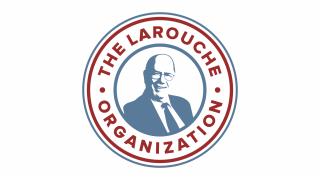April 15—Today marks the 100th anniversary of the Rapallo Treaty, an act of reconciliation that sought to heal, like the 1648 Treaty of Westphalia, the post-World War One “irreconcilable rift” between Russia and Germany. The Rapallo Agreement signed April 16, 1922 by Georgy Chicherin (Russia) and Walther Rathenau (Germany) resolved that Germany and Russia canceled all financial obligations between the two adversary nations. Rapallo was done in such a way as to provide Germany an economic means to regain its identity as a sovereign nation—state, out from under the murderous “reparations international” of the Versailles Treaty. Rather than be merely looted for coal, potash, sugar and other commodities, as a young Hjalmar Schacht, who was later to become finance minister of Nazi Germany, had proposed to John Foster Dulles in a letter dated March 20, 1922 (less than one month earlier), Foreign Minister Rathenau’s Germany would conclude a treaty to deploy its productive powers in cooperation with Russia’s newly-formed Soviet state. That state, just emerging from an unconsolidated revolution, a civil war, and a withering famine, had been isolated by the world diplomatic community and was desperately in need of industrialization. This was especially true with regard to the need for nationwide electrification, something that Walther Rathenau’s father, Emil Rathenau, an early collaborator of Thomas Edison who had built AEG into the largest power company in the world, had helped prepare his son to well understand.
Three months after the happy consummation of the Rapallo Treaty, Foreign Minister Rathenau, not only an industrialist, physicist and engineer, but an artist, musician and writer as well, was assassinated, the treaty scuttled, and the world plunged into hell as a result. Perhaps the deaths of over 60 million people in the Second World War would not have occurred had Rapallo succeeded. The effort we are embarked on now for a new security and development architecture is as important to history; the consequences of failure, far more dire.
While it may be true that “on such a full sea are we now also afloat,” the standpoint from which we can approach this daunting mission has to be with the intellectual optimism required to propose solutions designed for the durable survival of mankind. This method was well described by Lyndon LaRouche in his September 22, 2000 article, “Jesus Christ and Civilization”: "Consider the fact that history, as we presently know it, has been dominated by cycles of collapse and, sometimes, at best, recovery. Therefore, how might we be assured, now, that even if we were to rescue humanity from the effects of the presently onrushing global financial and monetary collapse, by the measures which I have proposed, that our thus-revived civilization will not begin to slide back, a generation or two later, into a new round of collapse, a collapse perhaps even worse than that which menaces us at the present moment…? Is it possible, that even the mastering of the immediate financial crisis, requires that we must also act now to overcome the more distant threat of a new dark age? In other words, although I have shown how the world could recover from the presently onrushing global financial collapse, perhaps the world will not adopt that option I have given it. Is there, then, some deeper, longer-range sickness within the world’s presently leading institutions, which, as seems probable at this moment, would prevent the world from accepting such a workable, near-term recovery program?
“…I shall leave it to your conscience, to estimate, whether or not even the bare, presently continued existence of our civilization, depends upon our solving that worrying, longer-term challenge. This would mean, that, at the least, we would adopt an efficiently conscious commitment to solving it, to a significant degree, over the course of a generation or more immediately ahead.”






